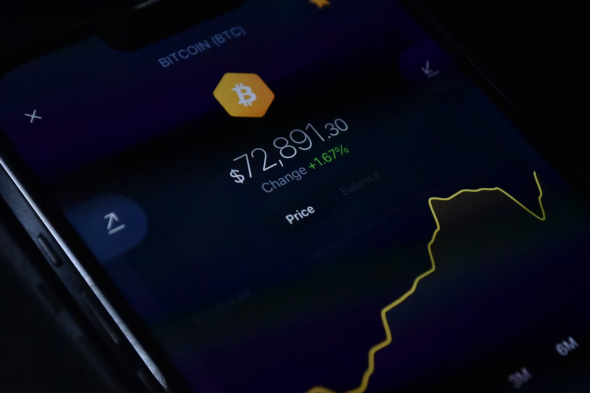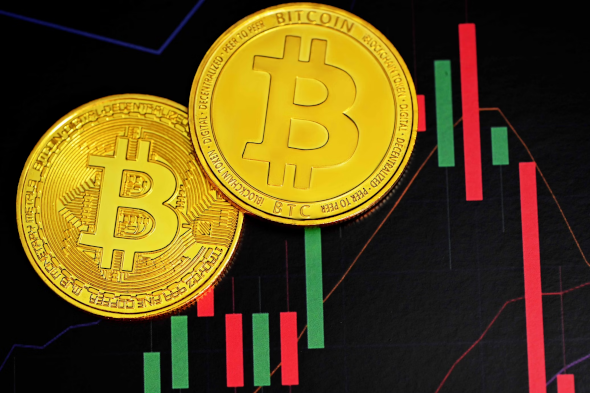As dawn breaks over the digital horizon, a giant awakens, stretching its limbs and casting a shadow over the landscape of modern finance. Bitcoin, the first and most renowned cryptocurrency, has embarked on another of its legendary climbs, sparking conversations, debates, and a flurry of excitement across the globe.
This recent surge is not just a number; it’s a signal, a beacon lighting up the path toward an unprecedented financial future. It inspires investors and motivates players at the Bombastic Bitcoin casino and similar platforms, who now have a chance of much bigger earnings. But what propels this currency skyward, and what can we anticipate as it charts its course through the turbulent skies of the market?

The Rollercoaster Ride of Bitcoin Prices
To understand the gravity of the current surge, we must first glance back at Bitcoin’s price history, a narrative replete with dizzying highs and heart-stopping lows. Since its inception, Bitcoin has been synonymous with volatility. From its humble beginnings of being virtually worthless to its (now second-highest) peak near $69,000 in November 2021, and subsequent dramatic fluctuations, Bitcoin’s price journey resembles a rollercoaster designed by a mad scientist.
This volatility isn’t without reason. It reflects the cryptocurrency’s growing pains, market sentiment, regulatory news, and its evolving role in global finance.
The recent growth phase of Bitcoin has captured the imagination of both seasoned investors and curious bystanders. After a period of consolidation, Bitcoin prices have broke a new record, surpassing $73,000 in March this year. This uptick is not an isolated phenomenon but a part of a broader trend that signals increasing acceptance and integration of cryptocurrencies into the mainstream financial ecosystem.
Unraveling the Mystery: What’s Behind the Surge?
The recent surge can be attributed to a confluence of factors, each playing a pivotal role in bolstering investor confidence and driving demand:
- The U.S. Securities and Exchange Commission’s approval of the first U.S.-listed Bitcoin ETF in January 2024 marked a watershed moment for the cryptocurrency industry. This approval catalyzed a significant uptick in demand for Bitcoin, as evidenced by the rapid accumulation of ETFs, which accounted for about 5% of the total tradeable Bitcoin supply shortly after the approval. The anticipation surrounding this regulatory milestone contributed to BTC prices reaching their highest point since December 2021.
- The upcoming Bitcoin halving event is scheduled for April 2024. Historically, halving events, which reduce the reward for mining new blocks by half, have led to a decrease in the new supply of Bitcoin, thereby exerting upward pressure on its price. Investors are buying Bitcoin in anticipation of selling it at higher prices post-halving, expecting a trend similar to past events where Bitcoin’s price continued to rise for about a year after the halving.
- The inflow into U.S. Bitcoin ETFs surged to $9 billion since their launch in January 2024. Institutions have been accumulating the cryptocurrency, with substantial purchases noted in the weeks following the ETF launch. This investor demand not only underscores the growing mainstream acceptance of BTC but also amplifies the market dynamics leading up to the halving event.
- The Bitcoin Ordinals phenomenon has revitalized on-chain activity with a notable increase in the number of active addresses. This resurgence is essential for the ecosystem’s health and contributes to a robust market structure that supports price growth. The Ordinals, by embedding digital files onto units of BTC, have also helped miners by contributing significantly to their revenue through transaction fees, thus supporting the network’s security and vitality.

Peering into the Crystal Ball: Future Developments
Predicting the future of crypto is akin to forecasting the weather in an alternate universe—expect surprises. However, several key factors are likely to influence its trajectory.
- Regulatory Clarity: The cryptocurrency market eagerly awaits more definitive regulatory frameworks from governments worldwide. Clear, supportive regulations could lead to wider adoption, while restrictive policies may hinder growth.
- Technological Innovation: The future of Bitcoin also hinges on ongoing technological improvements that enhance its functionality, security, and scalability. Breakthroughs that facilitate wider use cases for Bitcoin as a currency and asset will likely influence its price positively.
- Market Sentiment and Speculation: As with any asset, the collective mood of investors plays a critical role. Increased awareness, media coverage, and speculation can drive prices up, but they also make Bitcoin susceptible to sudden swings.
- Economic Factors: Global economic indicators, such as inflation rates, currency devaluation, and financial crises, will continue to affect Bitcoin’s appeal as an alternative investment and store of value.
Conclusion: Navigating the Future with Caution and Optimism
As we stand on the cusp of a potential new era in finance, Bitcoin’s journey reminds us of the transformative power of technology and the unpredictable nature of markets. While the future is laden with both opportunities and challenges, the ongoing evolution of Bitcoin and the broader cryptocurrency landscape is a testament to human ingenuity and the relentless pursuit of innovation.
Investors and enthusiasts alike should approach the future with a balanced mix of caution and optimism, keeping an eye on the myriad factors that drive Bitcoin’s price. As history has shown, the path forward will be anything but linear, but for those willing to navigate the complexity, the journey promises to be exhilarating.